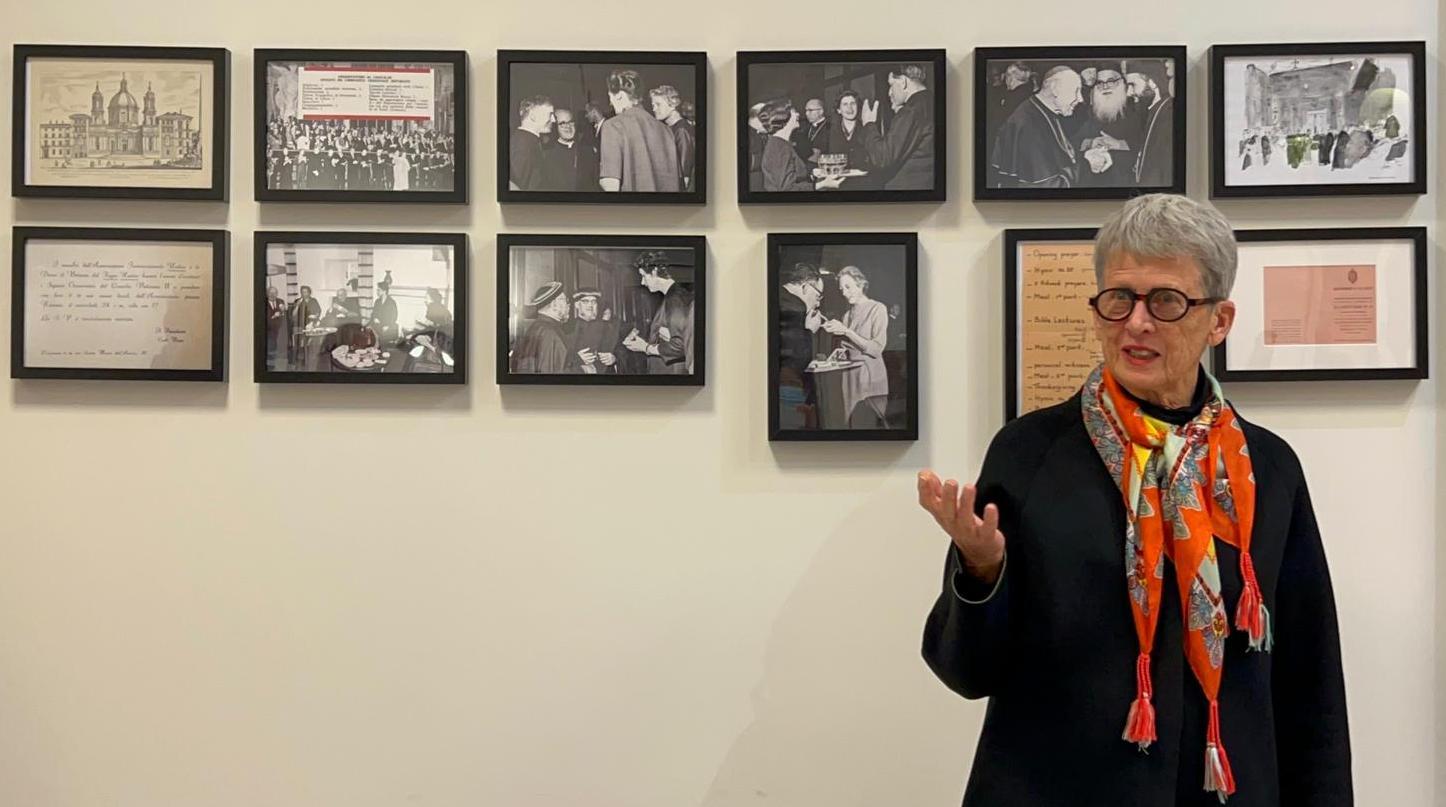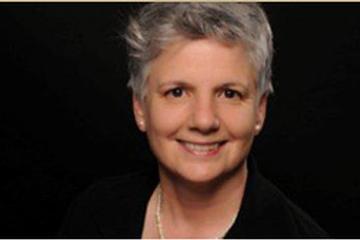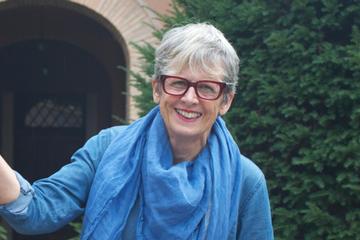
The Lay Centre at Foyer Unitas co-founder Riekie van Velzen
By Heather Walker
“Dialogue between members of different religions does not take place simply for diplomacy, courtesy or tolerance. The goal of dialogue is to establish friendship, peace and harmony, to share spiritual and moral values and experiences in a spirit of truth and love.” - Pope Francis, Nov. 16, 2021
ROME — The Ladies of Bethany were so keenly aware of the goal of dialogue they made it part of their life mission. Their untiring work, particularly during the Second Vatican Council, is evident in a new photographic exhibit, inaugurated at The Lay Centre at Foyer Unitas Nov. 25.
Lay Centre co-founder Riekie van Velzen was behind the initiative that captures some of the encounters that took place regularly at the guesthouse of the Ladies of Bethany between theologians and non-Catholic observers to the Second Vatican Council. The guesthouse was located on two floors of the Collegio Innocenziano on Piazza Navona. The building was owned by the Doria Pamphilj family.
The inauguration took place following a Thanksgiving Mass for Lay Centre residents and staff, presided by Archbishop Paul R. Gallagher, Secretary for Relations with States within the Holy See's Secretariat of State.
A little history
This small community of consecrated Catholic lay women was founded in the Netherlands in 1919 by Father Jacques van Ginneken, SJ. The Ladies of Bethany first sent two sisters to Rome in 1950, with the aim of promoting dialogue through hospitality in the spirit of Mary and Martha, the two “original” ladies of Bethany and friends of Jesus.
Van Velzen delved into archives at the Centro Pro Unione, located at the Collegio Innocenziano, to find the black-and-white photographs for the exhibit.
The book “Hearth of Unity. Forty Years of Foyer Unitas 1952-1992” narrates the Ladies of Bethany’s mission in Rome and provides information about the period of the Second Vatican Council.
“As early as 1959 the chairman of the Secretariat for Promoting Christian Unity, Cardinal Bea, and the Secretary General, Monsignor Willebrands, had approached us [the Ladies of Bethany] in a private conversation to enlist our help,” the book reads. “They asked us to receive and look after the wives of the observers who formed a virtually unheard-of phenomenon in the early sixties – it had scarcely dawned on celibate Curia circles that a theologian might be accompanied by his spouse. They also asked us to assist in other ways during Vatican II, for example by seeing to it that both formal and informal meetings between Council Fathers, observers and guests went smoothly. We realized that we were being offered a unique opportunity to help further the ecumenical dialogue and willingly promised to do all we could.”
The Ladies of Bethany worked hard to make sure everyone felt welcome and at ease. Frederick Franck, a Dutch-American artist, describes Foyer Unitas in his book “Outsider in the Vatican.”
“The house I lived in was an ecumenical council in miniature, where the moves in the Aula of St. Peter’s were not only critically discussed but even anticipated. At breakfast I could hear the Protestant observers […] sharing their worries and hopes over the developments with the monsignors,” he wrote.
“My nuns […] astonished me constantly by the freedom they allowed to blow through their house, the criticisms they voiced, their total disregard of rigid formulations, their spiritual earnestness, and their optimistic confidence about the renewal they expected from the Council for the Church and even for the world,” he continued.
The book “Hearth of Unity” also documents how “almost all the non-Catholic observers and guests came to Foyer Unitas at some point during Vatican Council II.”
Quite a feat in those days! Bringing together the non-Catholic observers to the Council was a very important aspect of the work of the Ladies of Bethany.
Further in the book, we read: “The presence of the non-Catholic observers and contact with them often resulted in Council Fathers rethinking their position. Growing conciliation among the observers themselves was also very fruitful. Their day-to-day participation in conciliar issues compelled them to enter into dialogue with each other. We had not anticipated that their living in our house would contribute to this to such a degree.”
At the inauguration, van Velzen explained to The Lay Centre community the reason for the exhibit.
“Let’s go back in time to the 1950s when a few Dutch nuns, wearing civilian clothes and referring to themselves by the secular ‘Miss’ arrived in Rome and set up a guesthouse for visitors and organized tours to the Vatican and important historical sites in the city,” said van Velzen, who moved to Rome from the Netherlands herself.
“Their charisms included hospitality and dialogue. So much so that during Vatican Council II they were handed a unique opportunity to further ecumenical dialogue. They helped to make sure that both formal and informal meetings between Council Fathers, observers and guests, went smoothly,” she continued.
“So, what has this got to do with us today?” she asked rhetorically, before recounting how she and co-founder Donna Orsuto approached the Ladies of Bethany with a project proposal in 1986.
“Donna and I were a little concerned that the nuns had decided to close down Foyer Unitas and return to Holland. Donna was a lay theology student at the Gregorian at the time, but had been working with the nuns since 1979, and I had been an assistant to the Ladies of Bethany since 1973,” she said. “We had a dream and we talked to the Ladies of Bethany to ask if we could take over and create a foyer for international lay students where we could offer both an academic and spiritual atmosphere. As always, the Ladies listened carefully. And so it was, with their wholehearted support, that we opened our doors on Oct. 1 to The Lay Centre at Foyer Unitas.
“Today, after 35 years, we still have the support of the Ladies of Bethany and many other people who have become our benefactors. We still talk about the charisms of the Ladies, but more importantly, they are alive in what we do every day,” she said.
“We hope that you will enjoy this exhibition and encourage you to ask us questions about the Ladies of Bethany and indeed about the history of The Lay Centre. One day, you will be part of this history and we hope that you, too, will hand on the torch to others as the Ladies did to me and Donna,” she concluded.
We hope many of you will be able to visit us in the months and years to come and see this exhibit for yourselves.
Photos courtesy Lay Centre staff
.jpeg)

